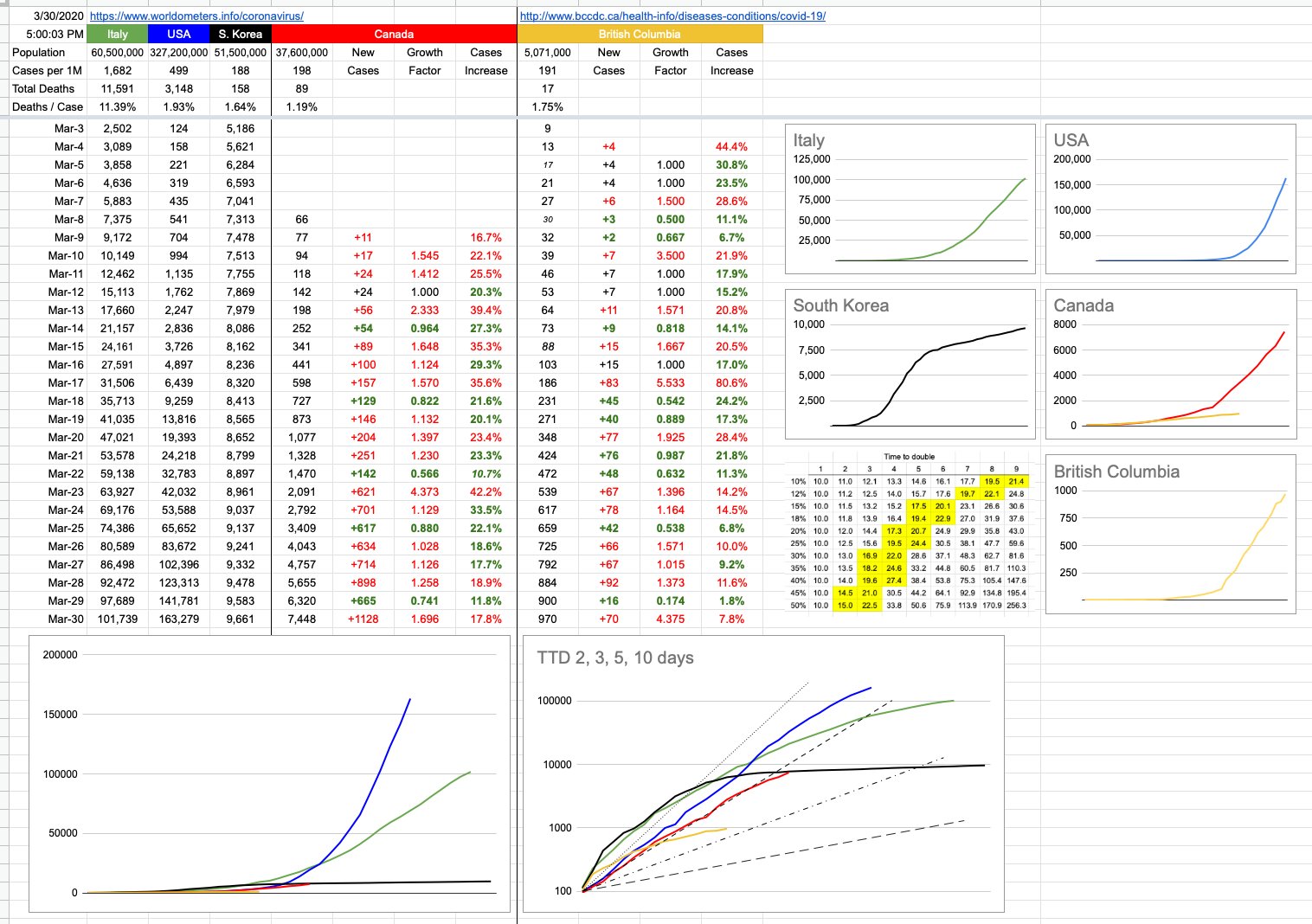Day 21 – April 6, 2020
When you’re on a plane, approaching the end of a long flight… if you happen to be paying attention at about 30 minutes before landing, you may notice the hum of the engines drop a semi-tone or two. And you will feel the nose of the plane pitch forward slightly. This is the result of the pilots reducing power to the engines, which is the first step of many needed to land the plane safely. It takes about 30 minutes to bring an airliner flying at 35,000 feet and 500 knots down to 0 feet and 0 knots. Indeed, there are ways of doing it much faster than that, and they’re highly not recommended. If you want to get the plane and all its occupants down safely, it’s a process, and that’s how long it takes. But what if we just “dive steeper”? Or just crank the engines and point it down and “go down faster”?
Anyone who’s ever pitched a proposal can tell you what two questions need answering first: how much will it cost and how long will it take. The cost is often negotiable. The “how long” often is not. Some processes can’t be altered nor compromised nor made better nor anything. You want a baby? You need a man and a woman and 9 months. Well, jeez… I’m in a hurry… what if we put 9 men on the job… can we have that baby in a month? Uhhh…. no.
That plane is in the hands of two people who know what they’re doing, and we put our trust in them, and they always seem to deliver. But if you happen to be sitting back in 29B, sitting next to “an expert” who’s explaining to you everything the pilots are doing wrong (“Hey see how that flap extended, man that’s gonna slow us down and burn more fuel, that’s no good, why’d he do that”), then you might understand how I’m feeling today after posting something yesterday that an awful-lot more people than usual read.
I like my plane metaphor, because it’s useful in two directions.
Number one, and more important… today is “double-header” day here in B.C. — we get both yesterday and today’s numbers of new cases, and that can go one of three ways… two wins… or two losses… or a tie. A quick eyeballing of the days leading up to today would imply that anything below a 5% case increase would be a win for either day. Less than 4% on both or either would be great.
The numbers were 2.2% and 3.0%, which are both really excellent. But as our resident captain and co-pilot keep telling us, we haven’t landed yet. Stay in your seat and keep your seatbelt fastened. We’re not there yet. And if you stand up now, we might hit some turbulence and you could get really hurt, or hurt someone else. See? Good metaphor.
Number two, I find it fascinating that everyone who 6 months ago was an expert on impeachment hearings and the way the senate works and immigration and indigenous rights… is today an expert epidemiologist.
The best evidence I have that I’m no expert is that it just took me quite an effort to spell that word correctly. And I don’t claim to be. I am an expert with computers, and I’m pretty good with numbers and I suppose I have a way with words… which leads to this possibly entertaining and hopefully informative but in no way expert opinion of what’s going on around us. Give me some numbers, and I can make some pretty graphs with pretty colours. I can map some tables with pretty informative numbers too. And, if you’re still reading at this point, can evidently write about it in some engaging fashion. I can tell you what’s going on from my own, unique point of view.
I feel the need to mention this so I can address this issue of “the numbers are all wrong so this is all B.S” which I see both publicly and privately. Sure… notwithstanding you’re not even a photographer, those shadows don’t look right and why aren’t there any stars in the background… clearly, the moon landings were faked. And here, give me the controls, I can land this plane. I saw it in a movie once.
These numbers are all we have, and, at present, they are serving us well. Some are straightforward. Some are inferred. Some are assumed. A lot of great minds are coming up with these numbers, and they’re in-line with what we’re experiencing. I can’t speak for the rest of the world, and I’m only going with what the credible sources tell us, but in general, those numbers are lining up with the associated experiences around the world. I am also, along with everyone else, waiting for the local emergence of a quick and accurate at-home serological antibody test… the test that will detect whether you’ve ever had the virus. And not just here. Everywhere. Actual science, not guesses and assumptions based on ignorance or hope. That will answer a lot of questions. That will verify the numbers. Or prove them all wrong.
Either way, until then, I’m going with the science.
View Original Post and All Comments on Facebook



